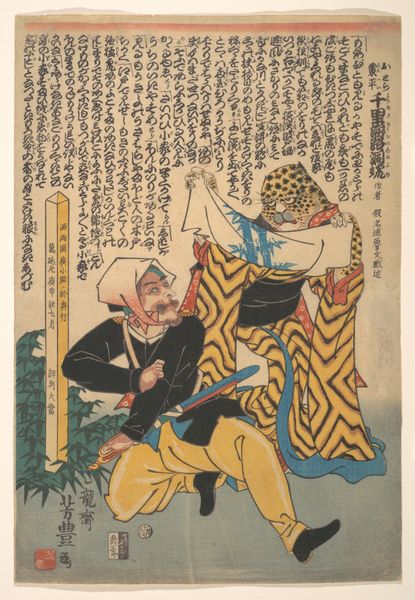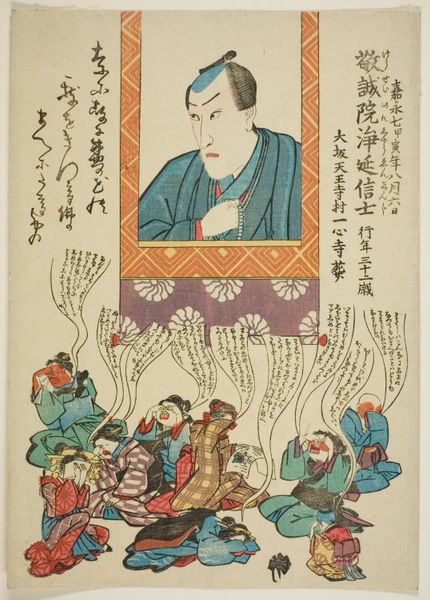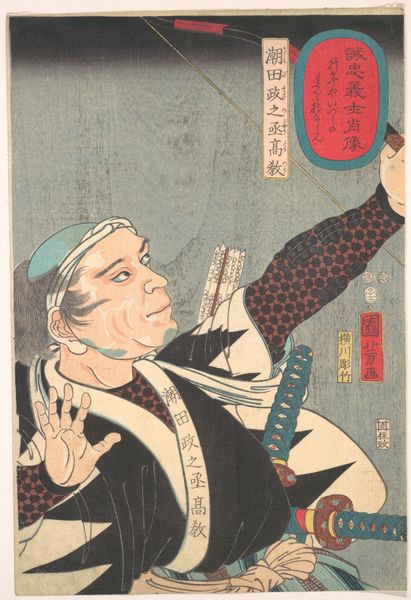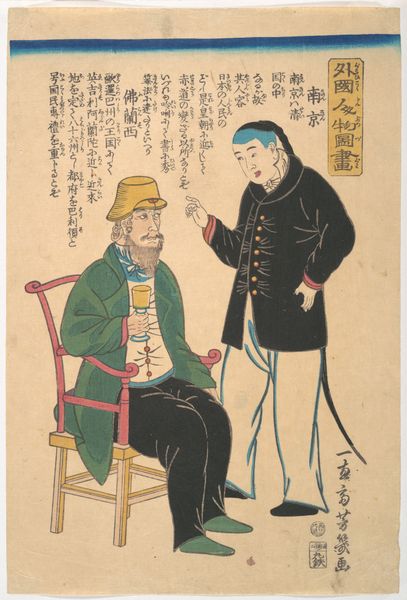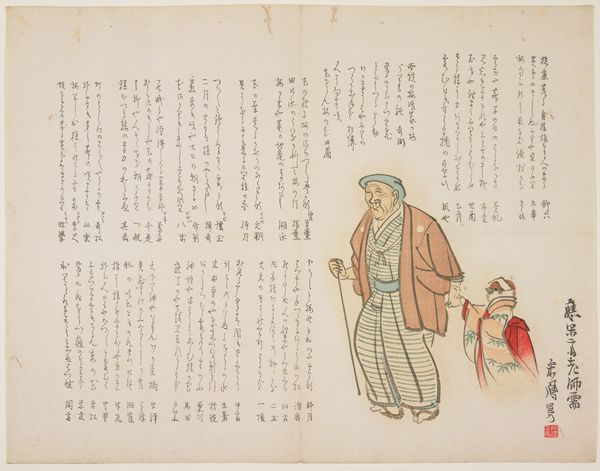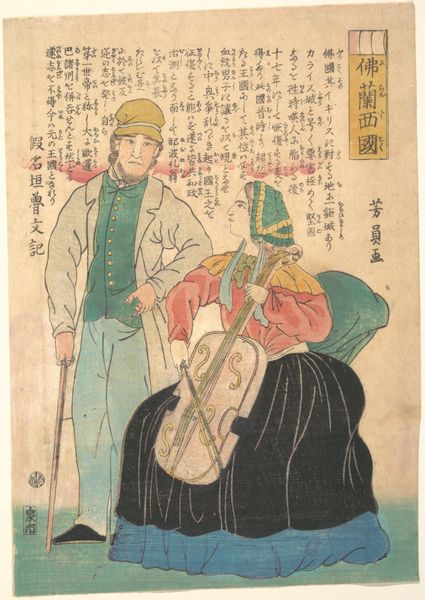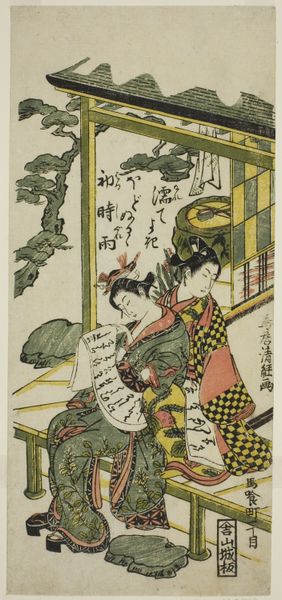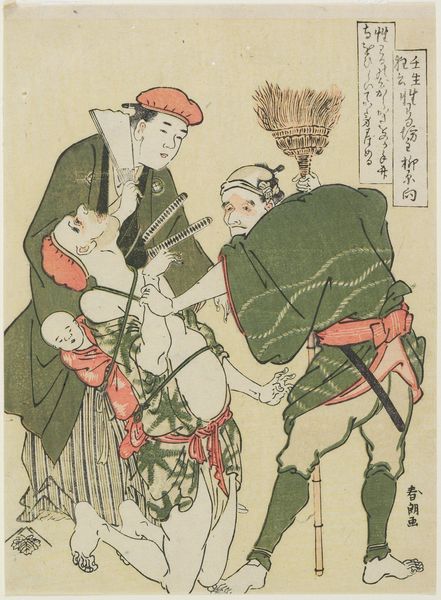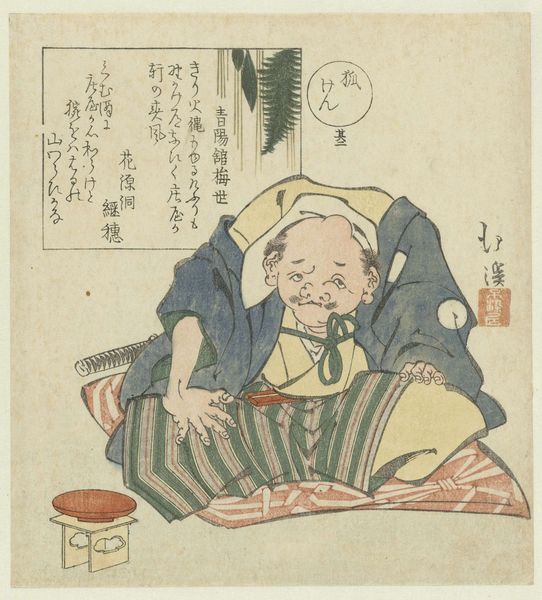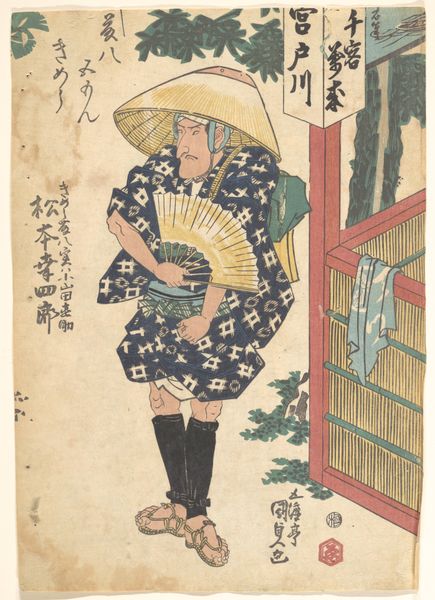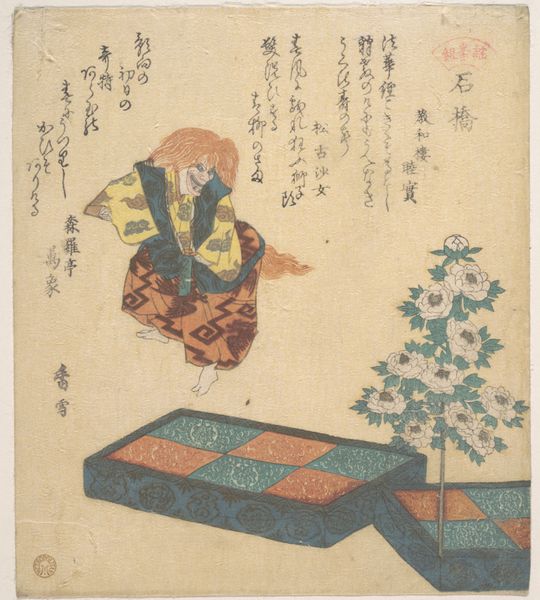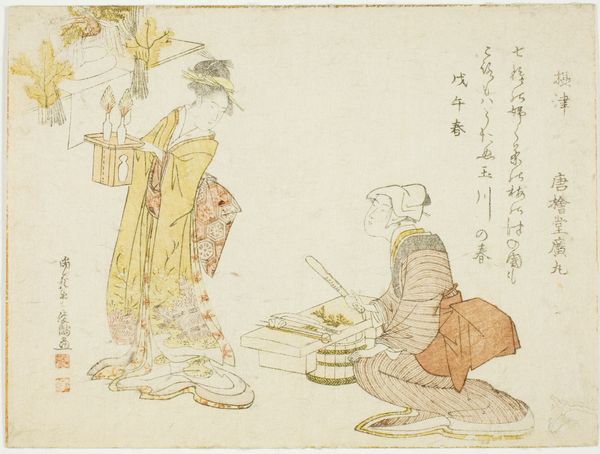
print, woodblock-print
#
narrative-art
# print
#
asian-art
#
ukiyo-e
#
figuration
#
woodblock-print
#
genre-painting
Copyright: Public Domain
Curator: The first thing that strikes me is how much fun this looks! It has this delightfully quirky energy, like a daydream put on paper. Editor: Absolutely. Let's delve in. This is "Island of Little People," or "Kobitojima" as it's known in Japanese, a woodblock print from 1863 by Utagawa Yoshikazu, currently residing at the Art Institute of Chicago. What’s fascinating is its context; it's an example of ukiyo-e, a genre that flourished during the Edo period, focusing on everyday life and popular culture. Curator: Ukiyo-e… it literally means "pictures of the floating world," doesn't it? This one’s got that playful, ephemeral quality for sure. I am especially drawn to the Western figure looming large over the scene, like he's wandered out of a storybook. Is he inspecting these "little people?" Editor: That's part of the appeal and the complexity of this work. It was made during a time when Japan was beginning to open up to the West. The depiction of a European man alongside smaller Japanese figures highlights that cultural encounter and, possibly, a bit of cultural commentary too. The illustrated palms, for example, could hint at an analysis of his foreign nature as well. Curator: Cultural commentary... perhaps it’s poking fun, or is it pointing out the power dynamics at play? It almost feels like Yoshikazu is inviting us to see ourselves reflected in that giant’s curious gaze. The miniature people with their basket, offering what looks like fruit... is that tribute, commerce, curiosity? It is fascinating. Editor: The “little people” engage in mundane activities, hinting at social structure but are made exotic by being seen from the visitor's imagined viewpoint. Remember that during this era, prints like this were also forms of news and entertainment. They disseminated images of the wider world, even if those images were filtered through the lens of artistic interpretation and political undertones. Curator: News, entertainment, politics… and such skill. The delicacy of line and color, the storytelling… You almost forget you’re looking at a piece of propaganda or information! It draws you in so gently you are caught completely off-guard. Editor: Exactly! Yoshikazu is using popular forms of art to represent and explore a pivotal moment in Japanese history, and "Island of Little People" cleverly shows that even seemingly innocent depictions are laced with layers of significance, if you look closely. Curator: A snapshot of a world in transition, beautifully—and sneakily—packaged. Food for thought and fuel for the imagination. Editor: Indeed. The Art Institute offers us a continued chance to see these intercultural exchanges in all their messy, fascinating glory.
Comments
No comments
Be the first to comment and join the conversation on the ultimate creative platform.
